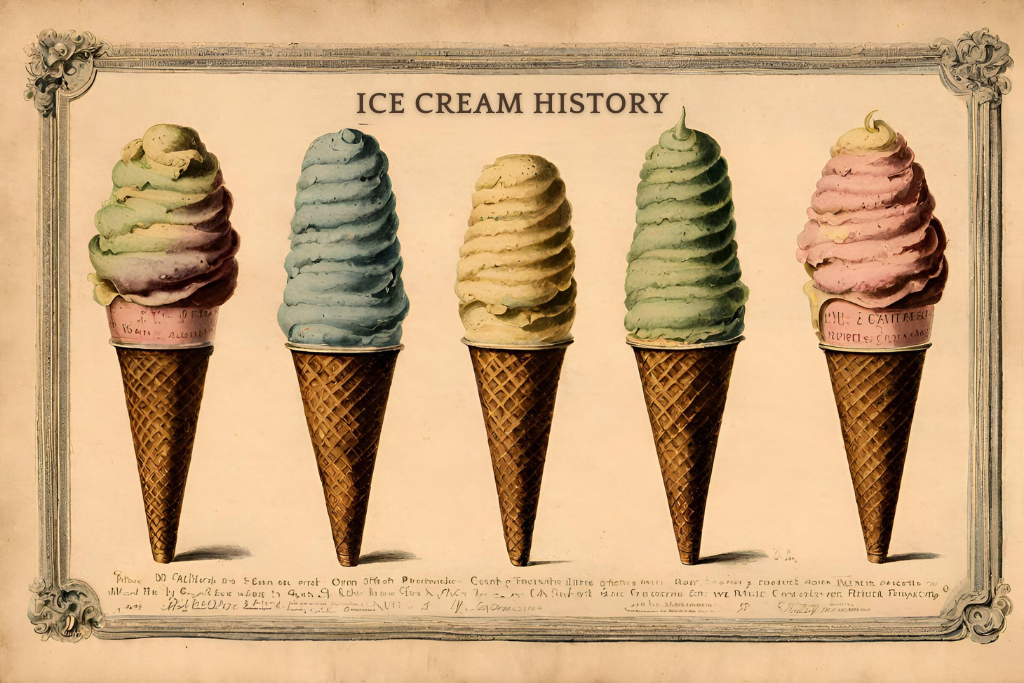The history of ice cream is a delightful journey that spans centuries and cultures. Its evolution from a simple frozen treat to a beloved dessert enjoyed worldwide is a testament to human creativity and innovation. Let’s explore the fascinating history of ice cream:

Ancient Beginnings: The origins of ice cream can be traced back to ancient civilizations. The Chinese are believed to have been the first to create a frozen dessert resembling ice cream around 200 BC. They mixed milk and rice, then packed it in snow to freeze. Similar concoctions were created by other cultures, such as the Persians, who used grape juice and snow.
Medieval Marvels: In the Middle Ages, the concept of frozen desserts made its way to Europe. By the 13th century, Marco Polo returned from his travels in China with stories of a frozen concoction resembling modern ice cream. However, it wasn’t until the Renaissance that ice cream gained prominence in Europe. The Italian courts developed “gelato,” a precursor to ice cream, made with a mixture of milk, sugar, and flavorings.

Royal Treats: In the 17th century, ice cream became a symbol of luxury and indulgence. European royalty embraced the dessert, and it started to spread throughout the continent. Ice houses were constructed to store ice, allowing for the creation of frozen treats even in warm weather.
American Innovation: Ice cream made its way to America in the 18th century. Founding Fathers like George Washington and Thomas Jefferson were known to enjoy ice cream. In 1782, President Washington even spent $200 on ice cream, which was a substantial sum at the time.

Industrial Revolution and Commercialization: The 19th century brought significant advancements in ice cream production. The invention of the hand-cranked ice cream churn in the 1840s by Nancy Johnson revolutionized the process, making it easier to produce ice cream in larger quantities. This era also saw the rise of ice cream parlors and vendors, making ice cream more accessible to the general public.
Innovations in Flavors and Techniques: As the 20th century dawned, ice cream flavors expanded beyond the traditional vanilla, chocolate, and strawberry. Commercial refrigeration and advancements in transportation allowed for the distribution of ice cream on a larger scale. With the invention of the cone at the 1904 World’s Fair in St. Louis, ice cream became even more portable and fun to eat.
Modern Era and Global Spread: The latter half of the 20th century brought further innovation to the world of ice cream. Mass production techniques improved, leading to an even wider variety of flavors and frozen treats. Innovations like soft-serve ice cream machines and the creation of novelties like ice cream bars and sandwiches added to its popularity.
Today, ice cream is enjoyed in countless forms, from traditional scoops in cones to elaborate sundaes, gelato, sorbets, and dairy-free options. The dessert has become an integral part of many cultures and celebrations around the world, bringing joy and comfort to people of all ages. The history of ice cream is a testament to human ingenuity and the simple pleasure of a sweet, frozen treat that has stood the test of time.


